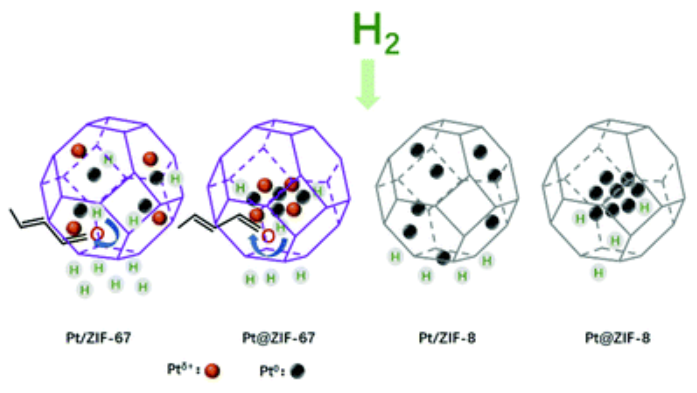Abstract
Metal organic frameworks (MOFs) have been applied to stabilize metal nanoparticles due to their excellent properties, but there are many different viewpoints about the interaction between MOFs and nanoparticles, which is important for catalyst activity and selectivity. Herein, Pt nanoparticles supported on ZIF-8 and ZIF-67 with the same topological structure other than the metal joint were synthesized, and crotonaldehyde hydrogenation was chosen to investigate their catalytic performance. The results indicated that both the activity and crotyl alcohol selectivity over ZIF-67 were much higher than those over ZIF-8, in which the TOF was 188.3 h(-1) for Pt@ZIF-67 and 7.5 h(-1) for Pt@ZIF-8. More importantly, the selective hydrogenation product of the C=O bond (crotyl alcohol) was not detected regardless of whether Pt nanoparticles were Located in the interior or exterior of ZIF-8. A series of characterizations were carried out to explore the essential difference between the two supported ZIF catalysts, such as H-2-spillover property tests, TEM, XPS, CO-DRIFTS, and operando-FTIR reaction. These results suggested that the H-2-spillover of the ZIFs could Way an important role in hydrogenation, besides the electron transfer between Pt and the metals in the ZIFs.

Keywords Plus:METAL-ORGANIC FRAMEWORKSCHEMOSELECTIVE HYDROGENATIONCO ADSORPTIONNANOPARTICLESCINNAMALDEHYDESPECTROSCOPYSPILLOVEROXIDATIONMOFIR
Published in NEW JOURNAL OF CHEMISTRY;10.1039/d1nj05487b,JAN 2022


